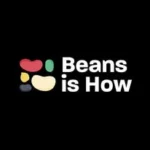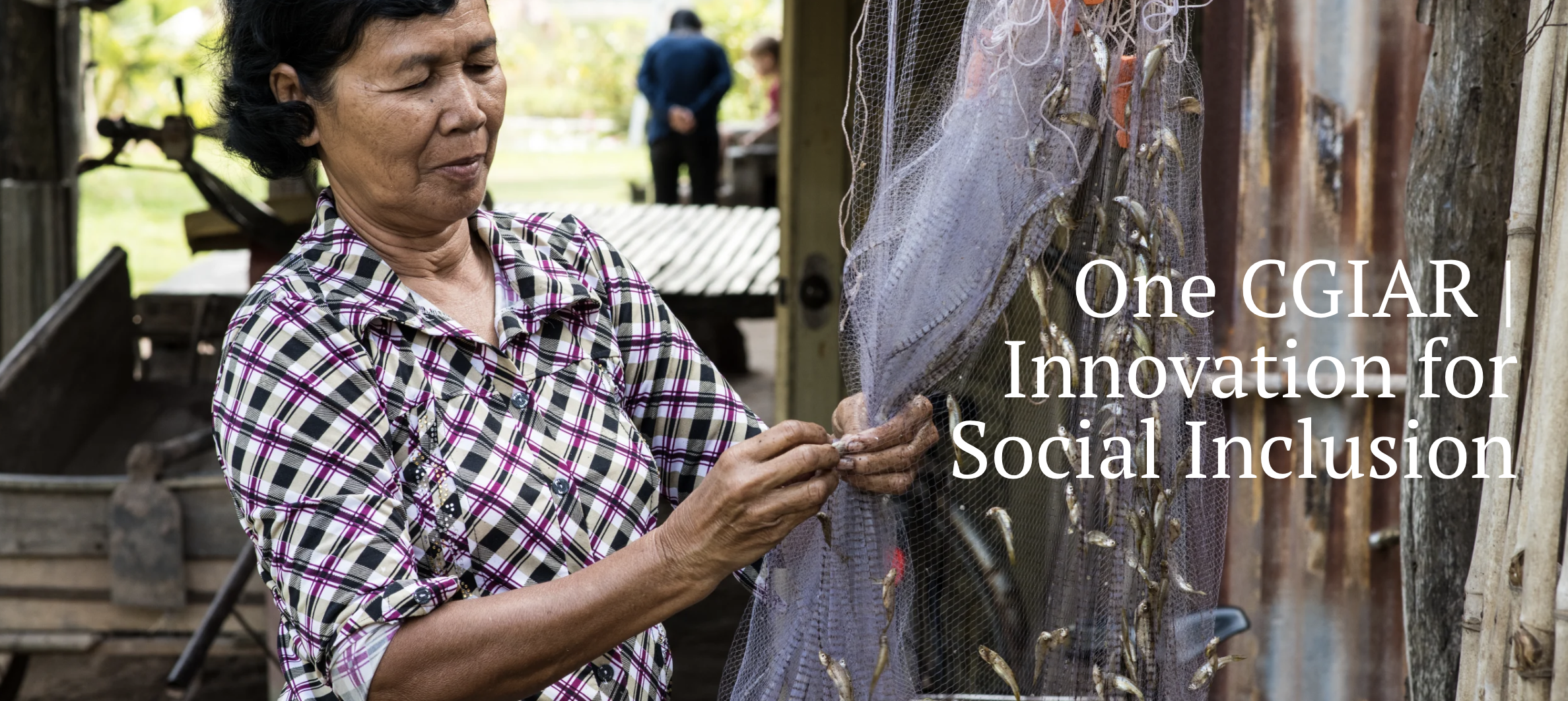
Stable, sustainable and secure food systems around the world were already scarce before the outbreak of COVID-19. Now, the UN World Food Programme projects that the number of people who suffer from acute hunger—approximately 135 million currently—could double due to the disruption of the global food system caused by the pandemic.
Sustainable Development Goal 2 (SDG 2) ‘Zero Hunger’aims, among other things, to double the incomes and agricultural productivity of small-scale food producers by 2030, with particular emphasis on women, indigenous peoples, family farmers, pastoralists and fishers. This should, amongst other things, be achieved through secure and equal access to land and other productive resources and inputs including knowledge, financial services, markets, and opportunities for value addition and non-farm employment.
What is standing in the way?
Access to land, social schemes, and decent employment contribute to the protection, inclusion and security of rural food producers, which has a direct positive impact on their productivity.
Yet with crucial global aid funding being cut as a result of the lack of political will to tackle the causes of food and nutrition insecurity—not to mention the diversion of minds, money and resources to address the COVID-19 crisis—there is a risk that attainment of the above will become increasingly challenging.
Innovation and research are crucial to getting the world back on track to achieve SDG2 by 2030.
Smallholder farmers, who produce half of the world’s food calories, must be prioritised. Specific consideration must be given to women, youths and indigenous people, as they are among the most marginalised by lack of access to productive resources and social inclusion schemes. This makes them more vulnerable to the impacts of climate change and other shocks, and subsequently more likely to migrate, causing disruption to global food chains.
CGIAR is the world’s largest global agricultural innovation network, uniting researchers and stakeholders around the world to harness the economic, environmental and nutritional power of agriculture. In the organisation’s 50 years of research and innovation, CGIAR scientists have seen how enhancing employment opportunities and inclusion within communities and protecting the rights of small-scale food producers is vital to achieving global food and nutrition security.
For some amazing examples of what their scientists have been able to achieve with the investment of time and money into new solutions to tackle old problems, keep reading!
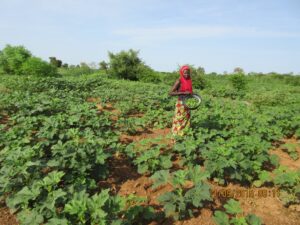
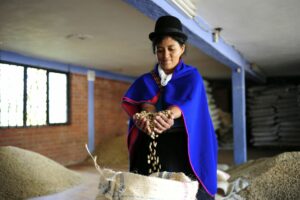
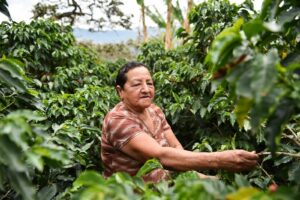
Gender equality
Land—arguably the most important economic asset—is often privatised or “grabbed” for commercial purposes, and those working the land—the majority of whom are women—are displaced and left without anywhere to farm and earn a living. Despite making up two thirds of the 600 million global small livestock managers and constituting a food, land and water systems workforce of over 500 million, only 12.8% of agricultural landholders globallyare women. With women responsible for more than half of the world’s food supply, their lack of secure and protected access to the land they work on puts entire food systems at risk. So, what are some of the solutions?
Bioreclamation to secure women’s rights to land
In Niger, plots which have lost their agricultural potential have been left to further deteriorate and utilised as commons for grazing or firewood harvesting only. They are usually farmed communally and allocated to women’s groups.
In the Sahel region, women find it difficult to own land due to customary practices and are often economically dependent on the (usually male) head of the household as a result.
Led by the NGO Catholic Relief Service (CRS) and the CGIAR research institute ICRISAT, the PASAM-TAI project in Niger, tackles women’s poor land access and widespread land desertification through the bioreclamation of degraded land. © ICRISAT
This project by CGIAR scientists at the International Crops Research Institute for the Semi-Arid Tropics (ICRISAT) developed a gender-sensitive approach to restoring these degraded plots that empowered local women by securing their rights to land.
Using a combination of new and indigenous techniques, this project supported women to transform and farm the land using water harvesting technologies, organic compost and the planting of hardy fruit trees and drought-resilient vegetables such as okra.
In Eastern Niger, 241 hectares of previously degraded land was transformed into productive agroforestry farmland. © ICRISAT
With direct access to land through this initiative, women are brought into the production system and empowered to generate an income for themselves, their households and their communities. The effect is tangible, with households reporting a 50% increase in income, created through the sale of annual leafy vegetables grown on the restored plots.
This project shows that empowering women to take ownership over food production and to access the necessary resources and inputs, is beneficial—not just for women themselves but also their communities and the global food systems they support.
An index for measuring women’s empowerment in agriculture
Women’s empowerment is recognised as crucial to agricultural transformation in many low- and middle-income countries, and yet women are routinely excluded from agricultural statistics and data. This makes getting an accurate picture of their roles and contributions, and designing strategies to strengthen them, challenging to say the least.
CGIAR researchers at the International Food Policy Research Institute (IFPRI) developed a tool to monitor women’s inclusion in agricultural sector growth.
A farmer in Colombia’s Narino Department checks her coffee bushes. © Neil Palmer, CIAT.
The Women’s Empowerment in Agriculture Index (WEAI) was launched in 2012, and is used to collect data from men and women within the same household. This data allows the measurement of five domains of empowerment for women—production, resources, income, leadership and time—against measures of gender parity in empowerment within households.
In addition to sparking critical dialogue in gender research, WEAI has catalysed action, with 108 organisations now using a WEAI-based metric across 56 countries.
In Ecuador, women often sell their cash crops on the local markets. Potatoes are important for food security and livelihoods in the Ecuadorian Andes. ©Manon Koningstein, CIAT.
This innovation is ensuring women’s empowerment counts and is quantified and tracked by understanding where and how women are able to join in decision-making processes over agricultural production and inputs; take ownership of and have access to productive resources, including land; have joint or sole control over income and expenditures; take part in economic or social groups and dialogues; and are able to balance their time between productive and domestic tasks, and leisure activities.
A smallholder coffee farmer in Colombia’s southwestern Cauca department. ©Neil Palmer, CIAT.
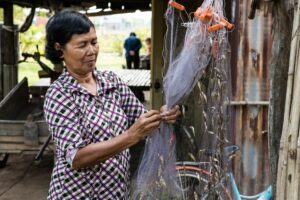
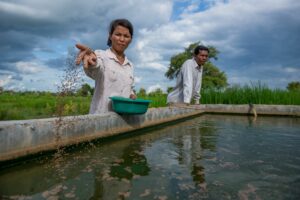
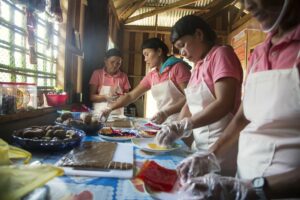
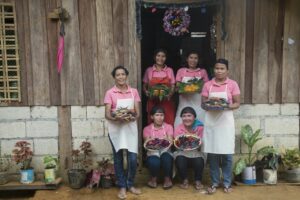
Poverty reduction, livelihoods & jobs
Without the prospect of decent employment, many people migrate from rural areas to seek economic opportunities in cities. This takes innovation and people-power away from the rural areas which are responsible for feeding the world’s growing population. In the words of the International Fund for Agricultural Development (IFAD): The starting point for a world without poverty and hunger, is the rural world. So, how to reinforce this critical sector and ensure strong employment opportunities entice workers to stay.
Healthy fisheries for nutrition and livelihoods
Fish is an important economic, cultural and nutritional resource for many low- and middle-income countries. An upsurge in demand for fish has led to greater consideration of the nature and sustainability of fish farming. The individual frames of a traditionally animated film are photographs of drawings that are first drawn on paper. To create the illusion of movement, each drawing differs slightly from the one before it.
A woman extracts fish from a net in a village model farm in Kampot, Cambodia. © Thilsted WorldFish.
CGIAR researchers at WorldFish have a renewed focus on the potential for fisheries to improve nutrition and provide sustainable livelihoods by revolutionising the involvement of fishers and fishing communities in the co-management of fisheries. They created more inclusive governance and gender-equitable, sustainable management arrangements in fisheries across Asia, from municipal fisheries in the Philippines to the co-management of water bodies and rivers in Bangladesh, to Cambodia’s “aquarian reforms”.
Research has also focused on enhancing the nutritional value of fish that people eat daily. A polyculture of micronutrient-rich indigenous fish species was introduced to increase the nutritional value of food readily available to local people.
A woman feeds her catfish in Stung Treng, Cambodia. © S. Borei WorldFish.
Household consumption of fish increased in the intervention areas, as well as household income from fish sales. This intervention had particular benefits for women’s and children’s health as women-run community ponds benefited 700,000 households in Bangladesh, and a further 65,000 households in the Indian state of Odisha.
The CGIAR researcher pioneering this work won the World Food Prize this year.
Holistic watershed development
In dryland areas, water availability can have an impact on land degradation, crop productivity and the wellbeing of rural communities. Watershed is the term used to describe an area or ridge of land that separates waters flowing to different rivers, basins or seas. Conservation of these areas through regenerating the land and smart use of natural resources, including the land, water, vegetation and animals within the area is what is referred to as watershed development. CGIAR researchers at the International Crops Research Institute for the Semi-Arid Tropics (ICRISAT) took a holistic approach to tackle the problems associated with water, such as drought, across parts of Africa and Asia.
A masonry check at the Kothapally watershed in Talangana State, India © S. Sribh
Watersheds in dryland areas depend on rainwater gathered to support healthy soil and land for farming. ICRISAT encouraged more efficient resource use through the integration of soil and water conservation initiatives, use of high-yielding crop varieties, and training on best resource management practices.
A woman collects water at a well that was recharged due to water harvesting in Lalitpur district © S. Sribh
An intervention in Kothapally, India resulted in water availability all year round, in an area that had historically struggled with water scarcity. Agricultural production increased significantly and farmers saw their income increase from USD 940 to USD 2,708 per hectare.
Farmer Rudrama benefited from the ICRISAT-CSR program where she learned about micronutrient application which has enabled her to grow more © S. Sribh
Watershed development interventions have been shown to increase productivity of fodder and livestock, improve efficiency of crop processing, and boost market linkages. This raises farmers’ incomes and increases crop diversity. In Ethiopia, for example, the additional water availability has meant farmers are able to produce fruit, chickpeas and other crops for the first time.
Capacity development and training curricula for farmers and scientists
Recognising that innovation starts with a solid education, CGIAR scientists at the International Rice Research Institute (IRRI) and the International Potato Centre (CIP)have provided 50 years of educational opportunities that have helped national scientists, farmers and other relevant stakeholders build the knowledge and skills needed to transform the world’s food systems.
A project called FoodStart Plus in the Philippines. © CIP.
IRRI’s international reputation grew after researchers developed a high-yielding rice variety that helped prevent widespread famine. Since 1962, IRRI has trained more than 17,000 people from 126 countries around the world, and continues to host more than 300 scholars annually.
Limited business skills and ineffective farmer organisations are some of the key constraints to effective market linkages for farmers. CIP supports grassroots product and business development through its Farmer Business School approach which invites farmers to engage in a series of group-based, experiential learning activities with trained facilitators.
Through partnerships with IFAD investment projects, a total of 147 Farmer Business School programmes thus far have reached 3,874 farmers, supporting them to achieve sustainable livelihoods.
Participants at a Farmer Business School in the Philippines. © CIP.
Share these stories on your socials and raise awareness of the crucial role of innovation and research in tackling world food and nutrition insecurity.
Read more about 50 years of CGIAR innovations that have changed the world.
Learn more about SDG2 at the SDG2 Advocacy Hub here.
Become a Food Systems Hero ahead of this year’s UN Food Systems Summit.
